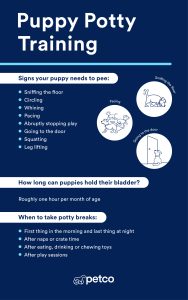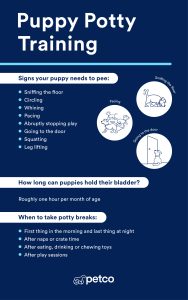If you’ve ever struggled to put a harness on your dog, you’re not alone. Getting your furry friend comfortable and secure in a harness can feel tricky at first.
But once you know the right steps, it becomes quick and easy—making walks more enjoyable for both of you. In this guide, you’ll learn exactly how to apply a dog harness with confidence and care. Keep reading, and you’ll discover simple tips that can turn a frustrating moment into a calm, happy routine.
Choosing The Right Harness
Choosing the right harness is key to your dog's comfort and safety. A well-fitted harness prevents pulling and protects your dog’s neck. It also gives you better control during walks. Consider your dog's size, shape, and activity level before buying.
Types Of Dog Harnesses
Different harness styles suit different dogs and activities. Some popular types include:
- Back-clip harness:Has the leash attachment on the back. Good for small dogs and calm walkers.
- Front-clip harness:Leash attaches on the chest. Helps reduce pulling by redirecting your dog.
- Dual-clip harness:Offers both front and back leash attachments. Versatile for training and everyday use.
- No-pull harness:Designed to discourage pulling with special straps or pressure points.
Measuring Your Dog
Proper measurements ensure the harness fits well and stays secure. Use a soft tape measure and follow these steps:
- Measure around the widest part of the chest, just behind the front legs.
- Measure the neck circumference where the collar usually sits.
- Check the manufacturer’s size chart before buying.
A harness too tight can cause chafing. Too loose and your dog might slip out.
Material And Durability
Choose materials that balance comfort and strength. Common options include:
- Nylon:Lightweight and easy to clean, but may wear faster.
- Leather:Durable and stylish, but requires more care.
- Neoprene:Soft and water-resistant, good for active dogs.
Look for strong stitching and sturdy buckles. These features improve safety and lifespan.
Preparing Your Dog
Preparing your dog before putting on a harness makes the process smooth and stress-free. It helps your dog feel comfortable and safe. Taking time to prepare builds trust and reduces fear. Two key parts of preparation are familiarizing your dog with the harness and using calming techniques.
Familiarizing Your Dog With The Harness
Let your dog see and smell the harness first. Place it near their bed or favorite spot. Allow your dog to explore it at their own pace. Give treats and praise when they show interest. This creates a positive connection with the harness.
Try gently touching the harness on your dog’s body without fastening it. Do this for short moments and reward calm behavior. Repeat this daily to build comfort. Soon, your dog will accept the harness as part of their routine.
Calming Techniques
Stay calm and patient during the process. Dogs sense your emotions and react accordingly. Speak softly and use a gentle tone. Offer treats to keep your dog relaxed.
Use deep, slow breathing to reduce tension. Try short massage strokes on your dog’s neck and back. Play soothing music or use a calming scent if needed. These steps help your dog stay calm and ready for harnessing.
Step-by-step Harness Application
Applying a dog harness correctly ensures your pet stays safe and comfortable. The process is simple when broken down into clear steps. Follow this guide to fit the harness smoothly without stress.
Positioning The Harness
Place the harness on a flat surface or hold it open. Let your dog step into the harness or gently lift their front legs through the openings. Make sure the chest strap lies flat and faces forward. The back piece should rest on the dog’s shoulders, not the neck.
Securing The Straps
Clip the buckles on each side of the harness. These usually fasten around the dog’s rib cage. Check that the clips snap into place with a clear click. Avoid forcing the buckles to prevent damage or discomfort.
Adjusting For Comfort
Pull the straps to tighten, but leave enough space for two fingers to fit comfortably. Adjust the straps evenly on both sides. Make sure the harness does not rub or pinch the skin. Your dog should be able to move freely without slipping out.
Credit: www.businessinsider.com
Checking The Fit
Checking the fit of your dog’s harness is vital for safety and comfort. A well-fitted harness prevents chafing and slipping. It also helps control your dog during walks without causing pain. Take time to adjust the harness carefully before each walk. This ensures your dog feels secure and free to move naturally.
Ensuring Proper Tightness
The harness should be snug but not tight. You must fit two fingers between the harness and your dog’s body. Too tight restricts breathing and causes discomfort. Too loose lets the dog slip out easily. Check all straps, especially around the chest and neck. Adjust buckles to keep the harness stable without pinching skin.
Allowing Room For Movement
Your dog needs freedom to walk, run, and sit comfortably. The harness should not limit movement of legs or shoulders. Watch your dog walk after putting on the harness. Make sure it does not rub under the arms or chafe the skin. Leave enough space for natural motion but not excess slack. A good fit moves with your dog without shifting.
Common Mistakes To Avoid
Applying a dog harness might seem straightforward, but small mistakes can cause discomfort for your pet or reduce the harness’s effectiveness. Avoiding these common errors will help your dog stay safe and comfortable during walks.
Over-tightening
It’s tempting to tighten the harness to keep your dog secure, but too tight can cause pain and restrict movement. Your dog should be able to fit two fingers comfortably between the harness and their body.
I once tightened my dog’s harness too much, and she started scratching at it constantly. Loosening it just a bit made her much happier and more willing to walk. Ask yourself: Is the harness snug but not choking?
Incorrect Strap Placement
Straps placed in the wrong spots can rub against sensitive areas or limit your dog’s movement. Make sure the straps sit flat against your dog’s chest and around the shoulders without twisting.
One time, I noticed my dog’s harness straps digging into her armpits because I hadn’t adjusted the chest strap properly. Adjusting the straps to avoid these pressure points improved her comfort immediately. Could your dog’s harness straps be causing unintentional discomfort?

Credit: edog.co.nz
Maintenance And Care
Proper maintenance and care keep your dog’s harness safe and comfortable. Regular attention extends the harness’s life. It helps avoid skin irritation or discomfort for your dog. Clean harnesses look better and work well every time you use them.
Cleaning The Harness
Wash the harness often to remove dirt and sweat. Use mild soap and warm water for cleaning. Avoid harsh chemicals that can damage the material. Rinse well to remove all soap residues.
Let the harness air dry completely before use. Do not put it in a dryer or near direct heat. This prevents shrinkage or damage to straps and buckles.
Regular Fit Checks
Check the harness fit each time before use. The harness should be snug but not tight. Make sure you can fit two fingers between the harness and your dog’s body.
Look for signs of wear like frayed straps or broken buckles. Replace the harness if it shows damage. Proper fit and condition ensure your dog’s safety and comfort.

Credit: www.lambwolf.co
Frequently Asked Questions
What Is The Best Way To Put On A Dog Harness?
To put on a dog harness, first, identify the front and back. Slip it over your dog’s head or step into it, depending on the type. Adjust the straps to fit snugly but comfortably. Ensure it’s not too tight and allows movement.
Check for any rubbing or discomfort.
How Tight Should A Dog Harness Be?
A dog harness should fit snugly but not too tight. You should be able to fit two fingers between the harness and your dog’s body. This ensures comfort and prevents chafing. Adjust the straps if necessary to achieve a balanced fit.
Always check for any signs of irritation.
Can A Dog Harness Cause Discomfort?
Yes, a poorly fitted harness can cause discomfort. It may lead to chafing, restricted movement, or even pain. Ensure the harness is not too tight or loose. Regularly check for any signs of irritation or discomfort. Adjust the harness as your dog grows or gains weight.
How Do I Choose The Right Size Harness?
Measure your dog’s chest and neck to choose the right size. Use a soft tape measure for accuracy. Check the manufacturer’s size chart before purchasing. A well-fitted harness should allow movement and not cause discomfort. Consider adjustable straps for growing dogs or those between sizes.
Conclusion
Applying a dog harness can be simple and safe. Choose the right size for your dog. Adjust straps to fit snugly but not tight. Let your dog get used to the harness slowly. Always check the fit before each walk.
A well-fitted harness keeps your dog comfortable and secure. Practice patience and praise your dog often. Soon, putting on the harness will become easy. Enjoy safe and happy walks with your furry friend.

Emily Barker is the founder of ChillDogLife.com, a space dedicated to helping pup parents discover the best dog products, lifestyle tips, and cozy ideas for happier homes.
A lifelong dog lover, Emily combines her passion for pets with a knack for research to share trusted recommendations on everything from toys and furniture to health and everyday care.
Her goal is simple: to make life easier, stylish, and more joyful for dogs and the people who love them.







